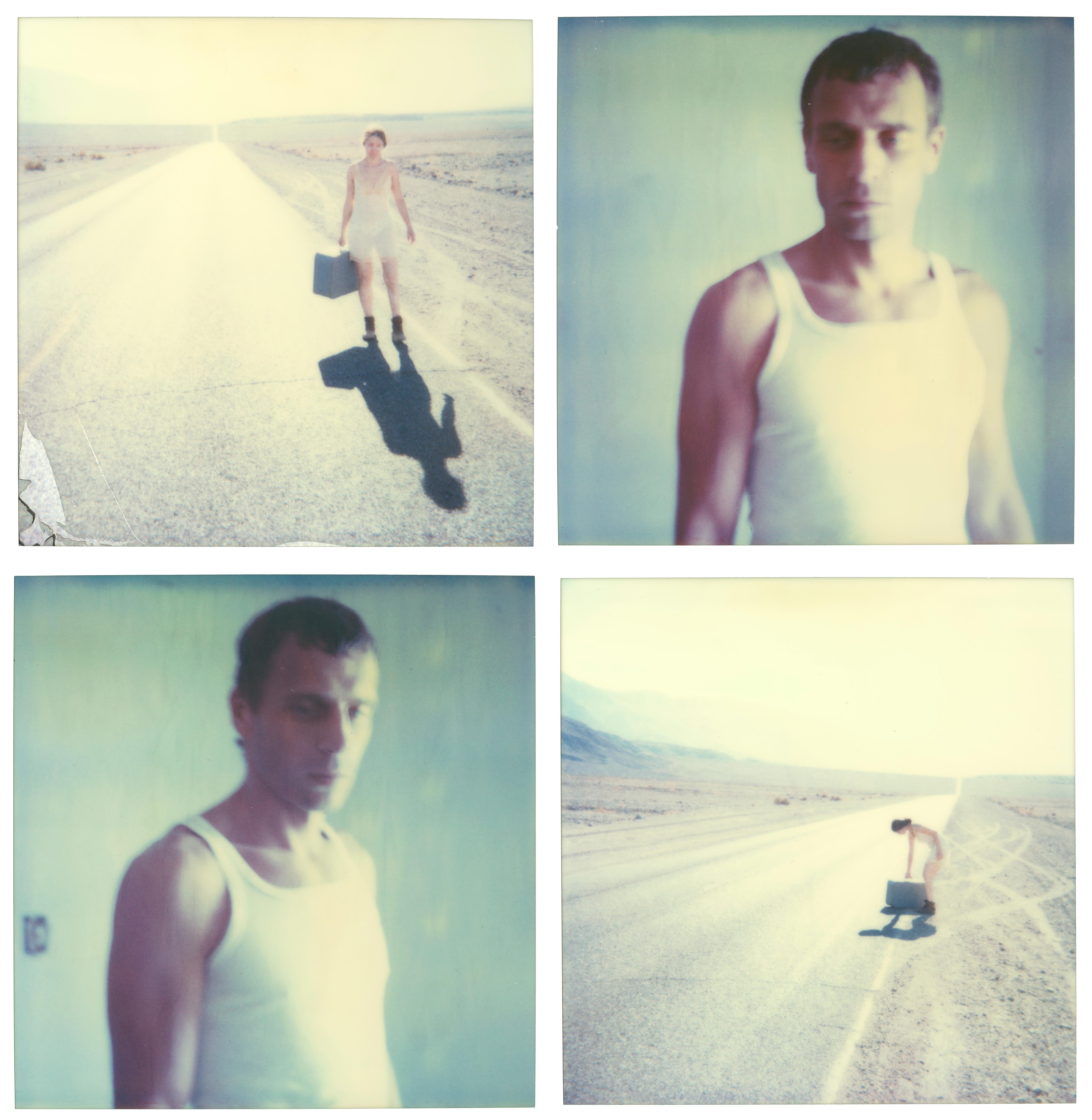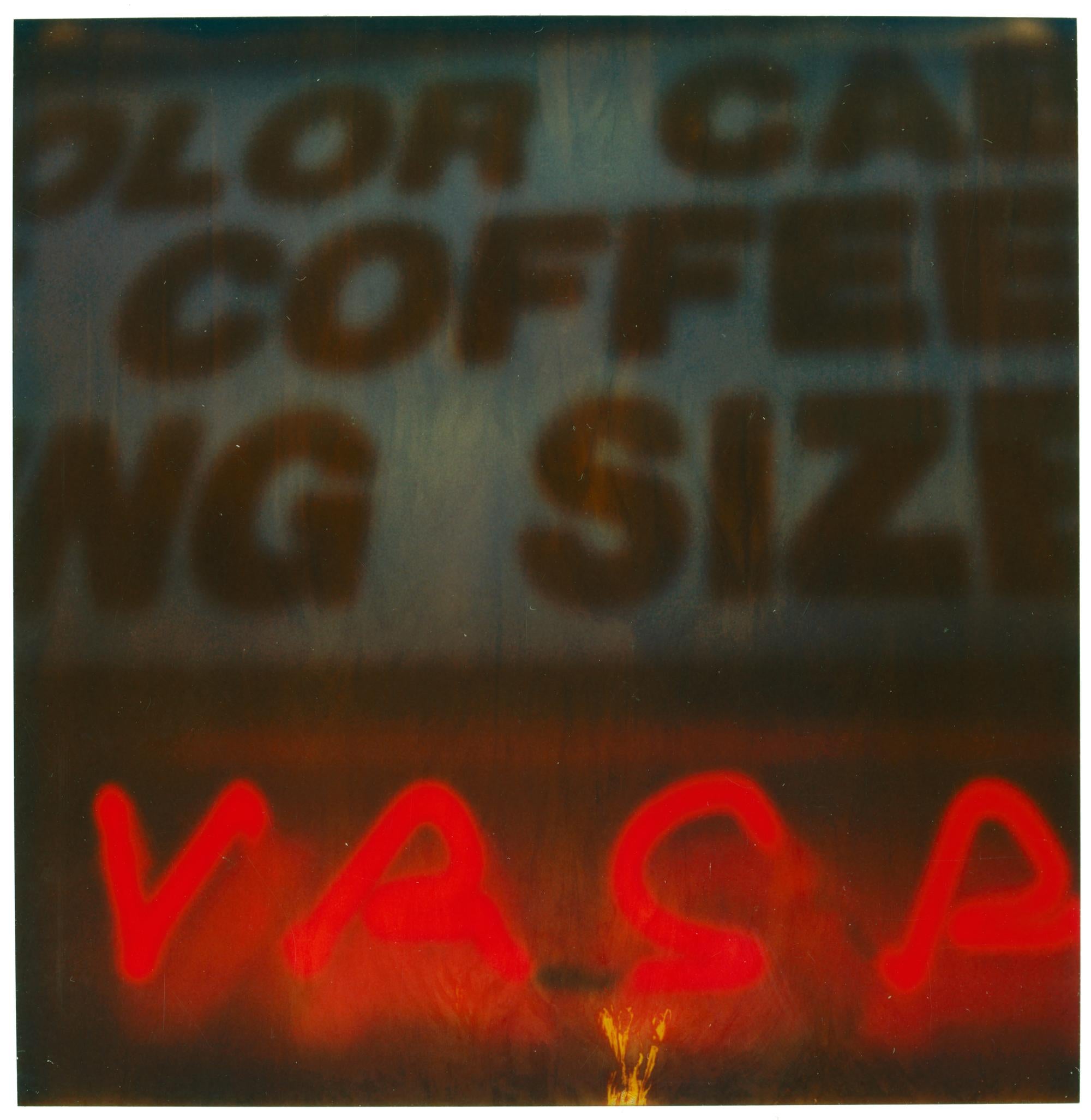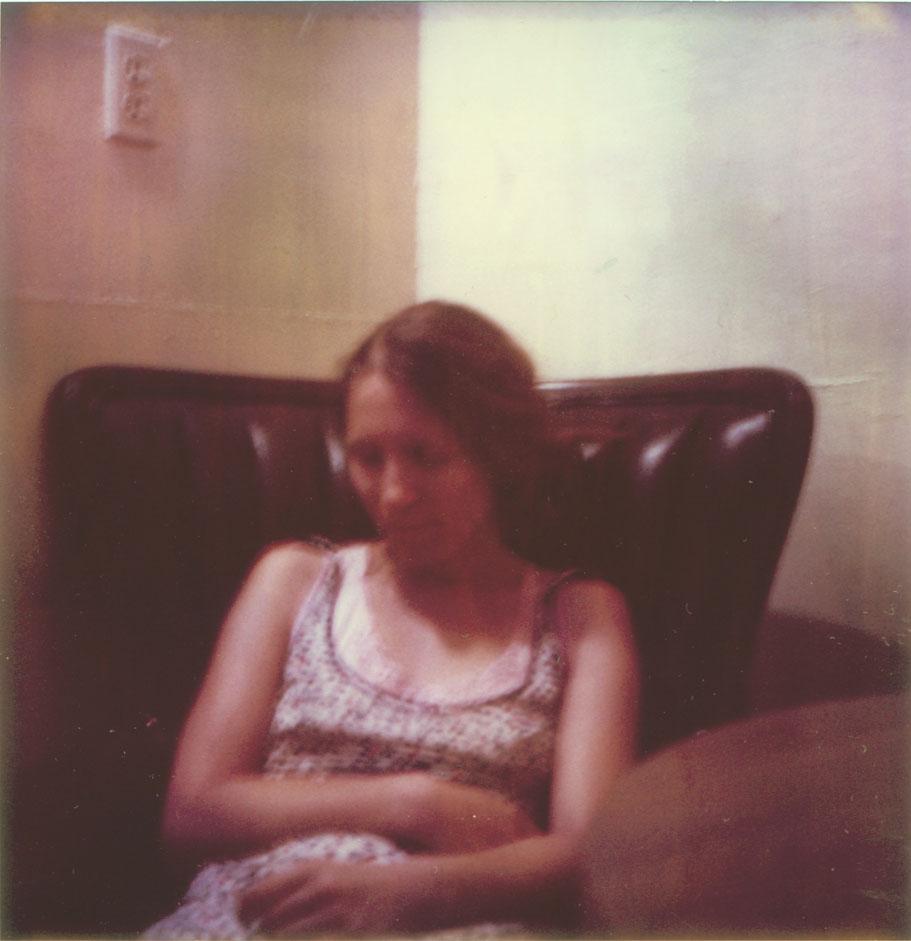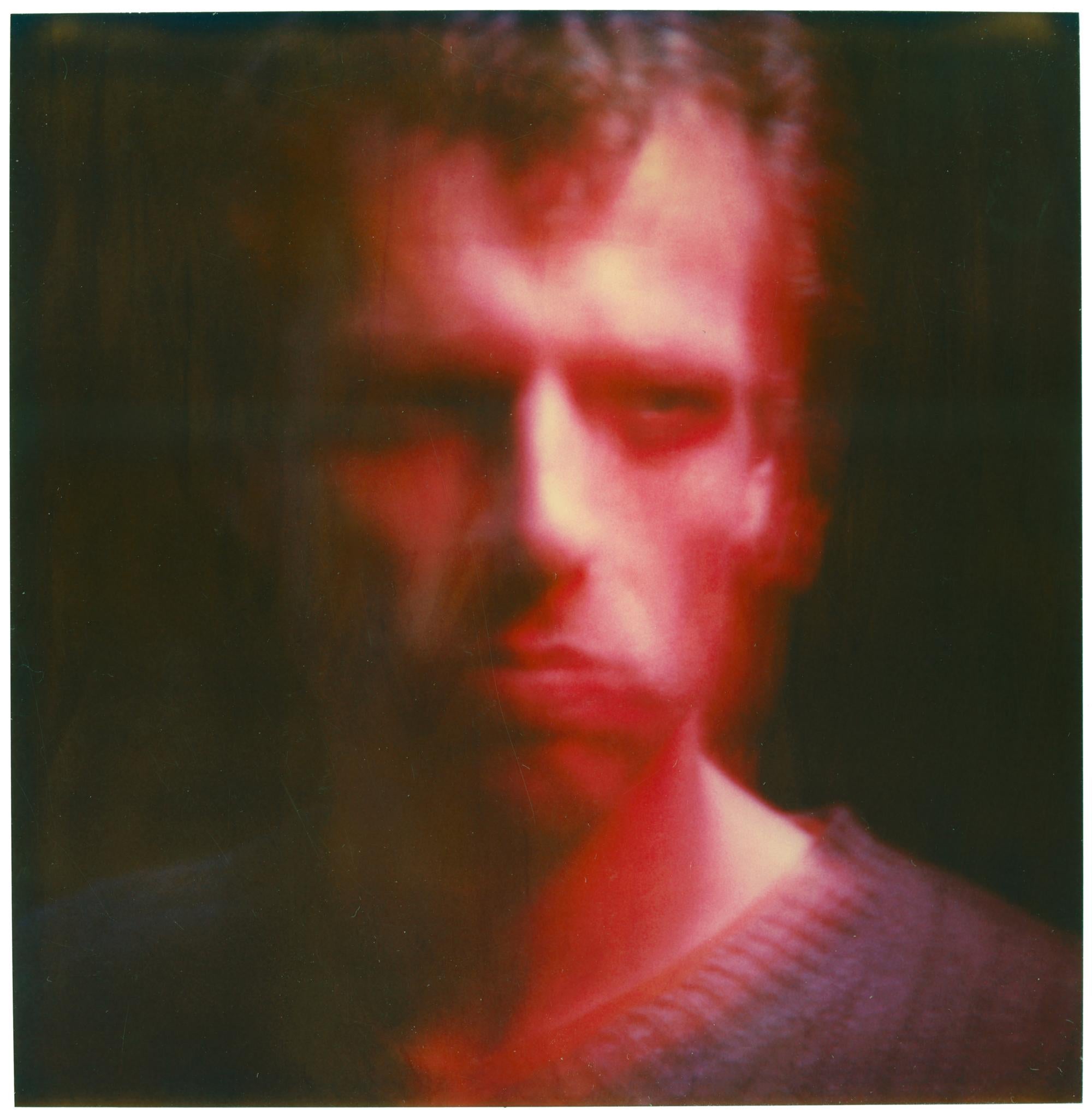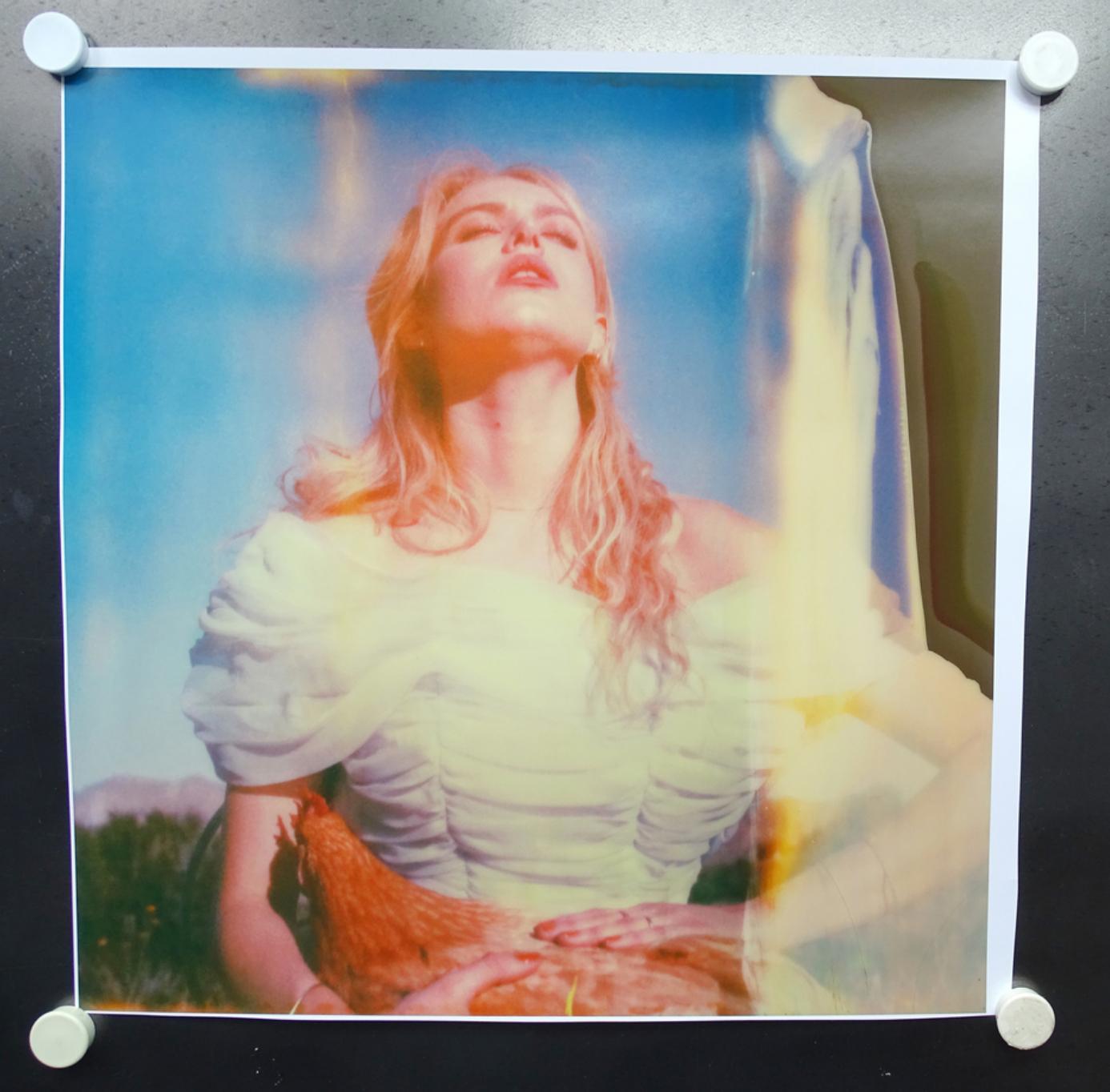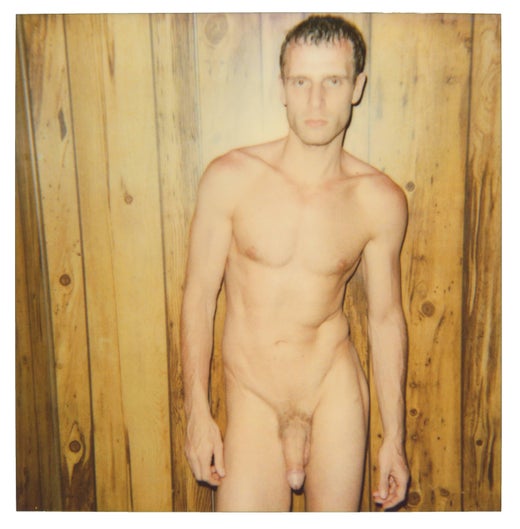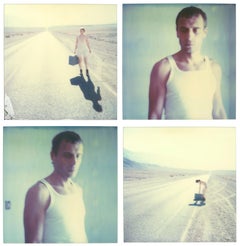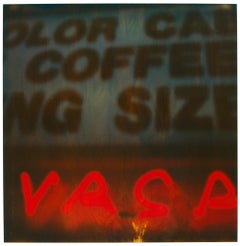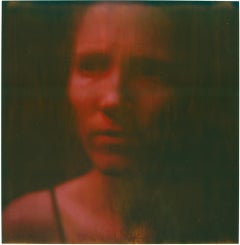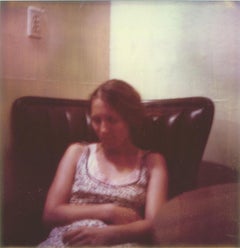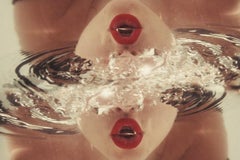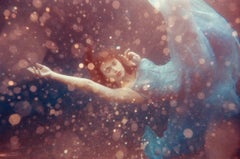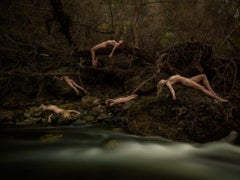Mindscreen 4 - 1999
58x56cm,
Edition of 10.
Analog C-Print, hand-printed by the artist, based on a Polaroid.
Signed on back with Certificate.
artist Inventory No. 245A.06.
Not mounted.
Published in the catalog for the group exhibition 'Night On Earth', Städtischen Ausstellungshalle am Hawerkamp, Münster, April - Mai, 2001
Ralf Christofori - aus dem Katalog "Night On Earth" zur gleichnamigen Ausstellung in der Städtischen Ausstellungshalle am Hawerkamp,
Münster, April - Mai, 2001
Stefanie Schneider's photographs are reminiscent of scintillating situations located on the edge between daydreams and sleeping dreams. All of the scenes she has shot in the South West of the USA seem surreally enraptured, and the artist herself seems only to act inasmuch as she gives the decisive impulse. The people who are photographed are no more tangible than the motives for their activities or the storylines of the photo sequences.
Atmospheric disturbances are in Stefanie Schneider's work the result of a narrative arrangement, which forces the viewer in between visual mementos and gaps in memories. But simultaneously the artist is working no less purposefully with media, and although their own momentum is calculable, the material that is introduced is largely uncontrollable: the best-before date on the Polaroid film pack has long since expired; the photo-chemical self-developing process takes the exposure and alienates.
This dysfunction is a fundamental element in the artist's work Mind Screen, which consists of several parts. She confronts the brittleness of the real, the genuine and the comprehensible with a magical realism dipped in chimaeras to produce dreamlike sequences. And she leaves the content of a presumed storyline up to the viewer. There is no user's manual here for people to follow: in its place, everything succumbs to the draw of these unreal, shimmering scenes, the Fata Morgana of a road movie, an act of violence or a tragic self-sacrifice. Film genres are brought in and taken away in the same breath. Wim Wenders' Paris, Texas turns out to have been shot through a rose-tinted lens, Thelma and Louise proves to be a popular ditty about a heroic mass mobilization, whilst The Good, the Bad and the Ugly mutually destroy themselves. Things shimmer and flicker before our eyes: we are unable to step out of this dream, nor are we able to verify it.
Stefanie Schneider received her MFA in Communication Design at the Folkwang Schule Essen, Germany. Her work has been shown at the Museum for Photography, Braunschweig, Museum für Kommunikation, Berlin, the Institut für Neue Medien, Frankfurt, the Nassauischer Kunstverein, Wiesbaden, Kunstverein Bielefeld, Museum für Moderne Kunst Passau, Les Rencontres d'Arles, Foto -Triennale Esslingen.
Photographer Stefanie Schneider splits her time between Los Angeles, where she shoots her photographs, and Berlin, where she develops and enlarges her prints. Her interests in photography are in the physical nature of film, especially the process of its deterioration and the framing mechanism of images arranged on a reel. Often using expired Polaroid instant film, she photographs individuals in trailer parks and different plane settings in Southern California. The combined marks of degraded chemicals and an apocalypse-like setting give Schneider’s photographs an evocative and unmistakable sense of style. Schneider also works on feature films, and has designed album covers for popular musicians, including Cyndi Lauper and the Red Hot Chili Peppers. Her work has been exhibited throughout Europe, including at the Braunschweig Museum für Photographie and at Les Rencontres d’Arles in France.
When did you know you wanted to be an artist?
It happened by chance. Right after my studies in film and photography, my initial plan was to move to Los Angeles to work in film editing. Coincidences lead me to a shop selling a box of expired Polaroid films, and without even having a camera, I bought them all. The next day I bought a camera, and went down to the beach with my sister to take some photographs. One thing led to the next, my work started to be exhibited, recognized, and sold. It all happened so fast and now, in hindsight, I think it was inevitable.
